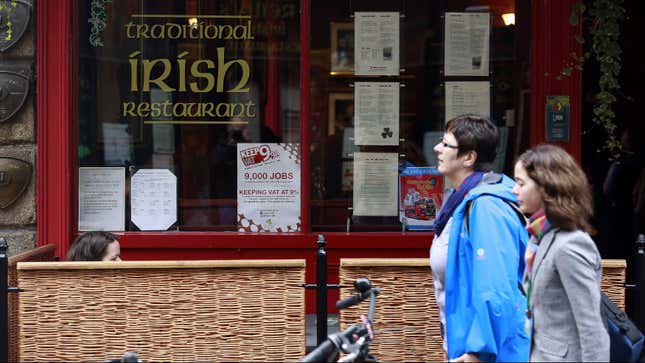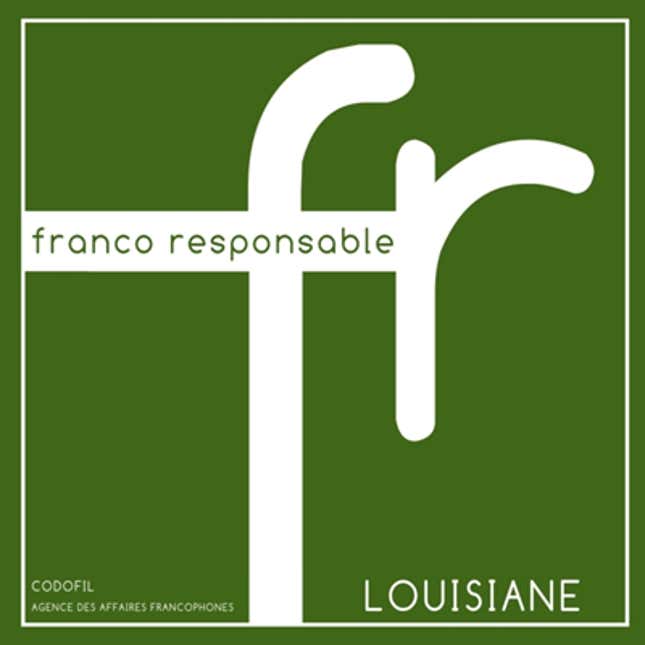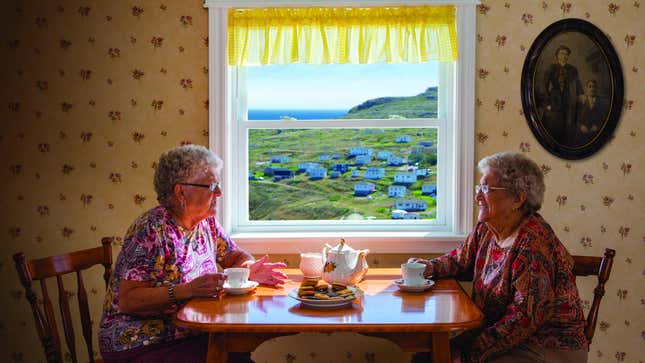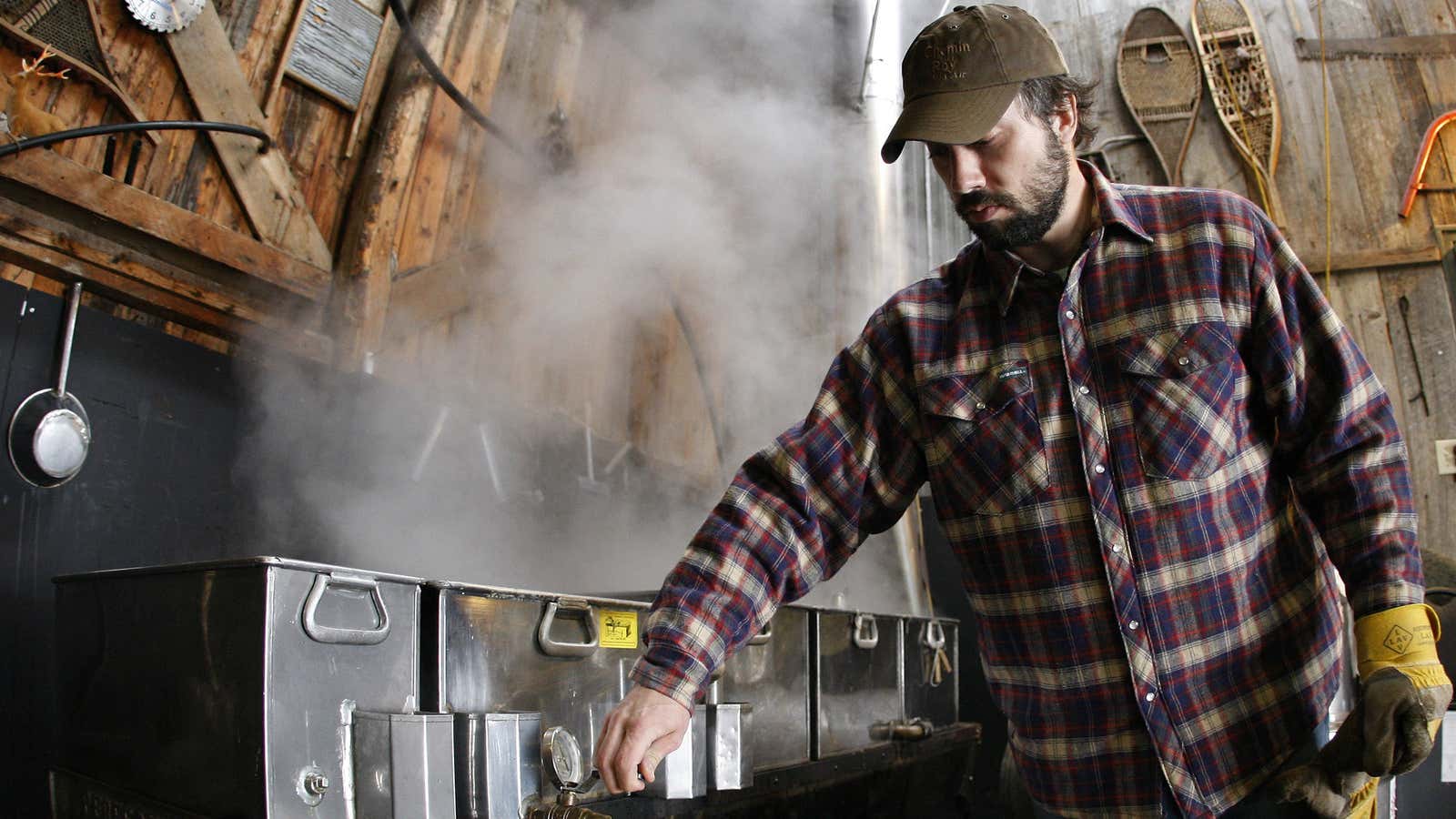Last year a Canadian public radio show called “This is That” reported a somewhat ridiculous-seeming plan, cooked up in the northern Alberta town of High Prairie: to attract more tourists, the town council had hired a linguist from Texas to invent a local accent.
Shopkeepers and residents would learn to speak in ascending tones, and drop their r’s, giving the town auditory distinction. “We’re asking ourselves the question, who is doing tourism right in Canada? And naturally our minds travel to places like the East Coast… as well as Quebec, and the one commonality between all of those places is the use of accent,” the town’s tourism commissioner said in an interview.
The story was widely shared by listeners who—like me—were unaware that “This is That” was not offbeat news but pure satire. This just-plausible-enough story fooled a lot of people, perhaps because it’s not that far from the truth.
As it turns out, the commodification of “linguistic variety” is a real thing in the tourism industry. Language is increasingly being used as the first point of contact in what eventually becomes a monetary transaction. Monica Heller, a sociolinguistics professor at the University of Toronto and the leading expert on the topic, has been tracking the way that local accents, dialects, and minority languages are being packaged as a part of “authentic experiences” around the world.
In Munich, for example, subway drivers are apparently encouraged to speak with Bavarian accents, to underline the uniqueness of the city. Search for “New York accent” on Trip Advisor and you’ll find numerous pizza places in the Midwest or Florida where the guy serving the pie “sounds like a real New Yorker.” In Christmas markets in Europe, vendors hire Franco-Canadians to sell maple syrup or apple cider from Quebec, because, as Heller, who is also the president of the American Anthropology Association, tells Quartz: “The accent is important. People will come and a person will say, ‘Where are you from? Let me hear you talk. Let me tell you about my holiday in Québec,’ and then turn their attention to the actual objects for sale.
“For [the customers] it’s as much the experience of talking to a real Franco-Canadian, a real Quebecois, and they want the accent,” she says. “The sellers want to provide that as part of the experience. It’s called value-added.”
The amount an accent is worth is up for debate. Heller feels it’s even unclear whether the value of a linguistic resource is quantifiable or should be, and says attempts to attach numbers to language commercialization have been messy.
What’s not debatable is that the practice raises complicated questions. When does the “fun” of discovering another way of speaking cross into creepy exoticization-of-the-other territory? And if such interactions with foreigners turn regular people into specimens, what about the experience is “authentic” anyway? Businesses that use language as a product seem to be taking the theme park mentality of “living villages” into actual towns, turning daily life into performance.
Irish as a commodity

In recent decades the Irish language, once seen as a marker of the backwards and uneducated, has become fashionable again, especially among Ireland’s urban middle-class. Still, the actual use of Irish appears to be on the decline.
In a 2011 census, 41% of the population claimed they had some ability to speak Irish. A closer look at the numbers, however, shows that less than 2% of citizens speak Irish daily outside of the education system (where it is compulsory). That figure jumps to 35% in the Gaeltacht, the Irish-speaking counties along Ireland’s western and southern coasts. Here, where Irish is strongest in older generations but slipping among young people, it has lately become a source of revenue.
Every year, businesses that sell three- or four-week language learning vacation packages (cleverly combining edutourism and heritage tourism) attract thousands of international travelers to towns in the Gaeltacht, promising “immersion.” And the staff at local pubs will speak to travelers in Irish, “because they see you as part of this package that’s bringing money to the area, so it’s part of their job” says Bernadette O’Rourke, a socio-linguist at Edinburgh’s Heriot-Watt University.
Sometimes, though, locals are irritated by the non-Irish speakers who expect to be accommodated. “[Tourists] start a conversation and they’re not proficient but they expect the person behind the counter to go through that process,” O’Rourke tells Quartz. “A shopkeeper might go along with it because it can be good for business, selling this authentic experience. But if it goes beyond the initial ‘hello, how are you,’ it may be going too far. It all depends on what people will put up with.”
To O’Rourke, the situation becomes problematic when those running the tourism enterprises are operating on a seasonal basis and not reinvesting in the community, which is often the case. As such, she asks, is it the local people themselves who become the commodities?
In the West Coast town of Ennis, the situation is even more curious. Ennis is near but outside the Gaeltacht; nevertheless, language advocates there are promoting the use of Irish in stores and hanging bilingual signs. “They’ve got local business people on board with Irish as a form of branding. But a lot of them are passionate about the language and feel a little bit guilty about using Irish as a commodity and getting money from it.”
French-friendly America
In Louisiana, a similar branding project is now underway, led by the Council for the Development of French in Louisiana, or CODOFIL.

The organization hopes to have its first Zagat-like “FrancoResponsable” (“French-friendly”) stickers in the windows of restaurants, shops and hotels in New Orleans and Acadia within a month. The stickers will be color-coded to indicate the level of French service that’s available to customers. Green will mean the business offers some effort to reach French speakers—maybe the menu is bilingual, for example. Silver will mean that service is spotty—perhaps the one francophone person on staff is not always working, so call ahead. A gold award will indicate that interacting entirely in French is always an option. CODOFIL staffers plan to personally verify the Frenchness of businesses before awarding any stickers at all.
The agency once focused solely on French-language education, so this commercial venture signifies a departure. The goal is to bump up the already sizable population of francophone tourists who visit Louisiana, and to validate the French language in a public way.
Promoters of the campaign and others like it say they recognize that inviting outsiders to experience Louisiana’s French dialects may sometimes put locals in awkward positions. In Louisiana, French has been stigmatized and repressed; “My French is bad,” is the first thing most Creole or Cajun French-speaking people will say to a foreigner’s bonjour.
However, according to a spokesperson from CODOFIL, French businesses are already excited about the FrancoResponsable program, which may one day be extended to doctor’s offices and other non-tourist locales. What’s more, it’s designed to support all forms of French in the state—regional, Haitian, European, or African. It’s also hoped that young Louisianans will see that French is connected to the job market, so they’ll have an incentive to master the language. In the 1960s, about a million people spoke French in the state. Today there are about 175,000 native speakers.
Whether tying the language to the whims of the tourist market is a good idea is not yet clear. “French isn’t alive and well like it used to be, so I feel that it is like everything—there are good and bad points,” says Emilie Urbain, a Belgian-born adjunct professor at the University of Moncton who has conducted linguistic research in Louisiana. Economically, though, it may deliver, says Joseph Dunn, a former CODOFIL director. Already, francophone visitors bring $250,000 in revenue per year to just one site, the Laura Plantation, Dunn’s current marketing client.
English spoken with a Cajun accent, often associated with illiterate characters in pop culture, is also something people are starting to play with in tourist contexts, notes Urbain.
Newfoundland asset

The French of Louisiana have a lot in common with the people of Canada’s Newfoundland and Labrador, traditionally one of the country’s poorest provinces. People who live there often speak with a unique accent that can incorporate various dialects. The literary sensation Karl Ove Knausgaard made note of it in his New York Times Magazine story this month. (“Pierce talked the whole time, while I nodded and made noncommittal noises as I struggled to make sense out of the few words I could understand. He had lived in the area all his life, grew up in a nearby village and moved to St. Anthony a few years ago, he worked in the fisheries and in boatbuilding, possibly also at a car-repair shop, and he had had a pacemaker put in, that much I gathered.”)
Like the rural Irish, or the Cajun speakers who Urbain says “have been told their whole life that their French is broken,” Newfoundlanders have a complex relationship with their accent and identity. In Canada, politically incorrect jokes about Newfoundlanders virtually mirror the hoary old Polish jokes familiar to most Americans.
But last year Newfoundland tourism produced a promotional video depicting groups of locals talking to each other in different scenes while the narrator described the province’s hundreds of dialects—for those who listen carefully. “Don’t be surprised if you find yourself lost in conversation… or a bit of tomfoolery,” is the kicker.
Although the video reinforces the cliché about unintelligible Newfoundlanders, “The positive spin is they get a community, and the solidarity, in which they can set the rules for themselves,” says Heller. The tourism agency also recently created Language Lessons, a series of 31 micro-lectures in which locals explain phrases like “Who knit you?” or “Splittin’ the rocks,” sayings only heard in Newfoundland. These are the first TV ads to spotlight language, but not the first time the agency has pushed the province’s linguistic singularity “as one of many in a long list of selling points about Newfoundland,” says Carol Ann Carter, manager of advertising and communications. Over the past decade, she says, “To the rest of the country, we’ve become the cool people to hang out with.” (A few years ago the tourism authority in Skane, in southern Sweden, took a similar stand to support that district’s dialect, which apparently had been scaring off fellow Swedes.)
So is putting on accents harmless, or is it upholding old power dynamics? The answer depends on who is involved. Heller’s work shows that it’s often marginalized or minority populations who were once protected by the state who now find themselves “selling” or deploying a part of their identity as a way to adapt to newer free market environments.
“One of the things that people could be thinking as they travel around is ‘What am I expecting?’” Heller suggests. “Am I expecting people to be as authentic as possible, even if that’s difficult for me to understand? What am I valuing and why am I valuing that? And what does that mean for the provider, what am I asking them to do for me? And is that nice?”
